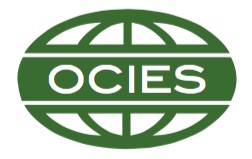The significance of flexible learning spaces and student-centred pedagogies in school settings: A comparative case study
Keywords:
Educational change, school building, school design, future classroom lab, teaching methodsAbstract
In the latest studies, the physical climate and the pedagogy it allows in schools has been suggested as a significant factor supporting educational improvement. The schools are surrounded by a lot of elements: physical space, digital space, teachers, students, and learning process as well. However, how these elements are considered to design pedagogically supportive learning environments is also important. In this paper, the importance of using learning spaces and the pedagogy for teaching and learning in school settings have been widely discussed via case study design. How learning spaces in school-level are arranged to facilitate active learning and teaching is discussed via a comparative study between learning spaces in a case school in Germany and the Future Classroom Lab Model. Data include observations, photographs and video recordings. The process mentioned in this paper aligns the pedagogy with seating arrangements and physical learning spaces in the school building by defining the pedagogy used in a specific course with some sample course activities and discusses the effects of both lesson design and the flexible use of spaces on student outcomes.
Downloads
Published
Issue
Section
License
Copyright (c) 2024 Lamia Büsra YESIL, İpek Saralar Aras

This work is licensed under a Creative Commons Attribution-NoDerivatives 4.0 International License.
The International Education Journal: Comparative Perspectives is the official journal of the Oceania Comparative and International Education Society. The IEJ, (ISSN 1443-1475), publishes a general volume bi-annually in July and December and also publishes Special Editions occasionally. It is a free, open-access scholarly journal, managed by volunteers. There are no article processing charges, or any charges to authors.
In relation to intellectual property, as of 2020, the IEJ: CP claims only first publication rights; copyright of all work published in the journal remains with the authors under Creative Commons copyright license CC-BY-ND (4.0). Author(s) retain all rights to their works, ensuring that reference to the International Education Journal: Comparative Perspectives is clearly stated on any copies made or distribution. Submissions must not involve third parties with a claim to copyright, and be the sole work of the author(s). It is the responsibility of the author(s) to secure permission to reproduce photographs, illustrations, figures or tables. Single images, tables or figures can be re-used . If more than a single image or table are to be re-used authors must attribute first publication to IEJ: CP notify the IEJ: CP Editor. Authors may also make derivative works which are subject to these limitations.
See https://creativecommons.org/licenses/by-nd/4.0/ for more detail.
Re-distributed or used material must be referenced to the International Education Journal: Comparative Perspectives.
